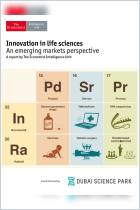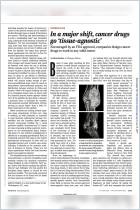
Read or listen offline
áudio gerado automaticamente
1×
áudio gerado automaticamente
Recommendation
Science writer Sophia Chen provides a straightforward explanation of how radiation therapy machines work and why the new linear accelerators (linacs) are safer and better than the old type that uses radioactive material. She shares some disturbing stories about radiation accidents that happened when old machines ended up in the junkyard, explains why developing nations need new machines adapted for their environments and identifies who is helping to achieve that goal. getAbstract recommends Chen’s analysis to anyone with an interest in health care in developing nations.
Take-Aways
About the Author
Sophia Chen is a science writer and “lapsed physicist.” She writes for Wired, New Scientist, and other publications.
















Comment on this summary or Iniciar a Discussão